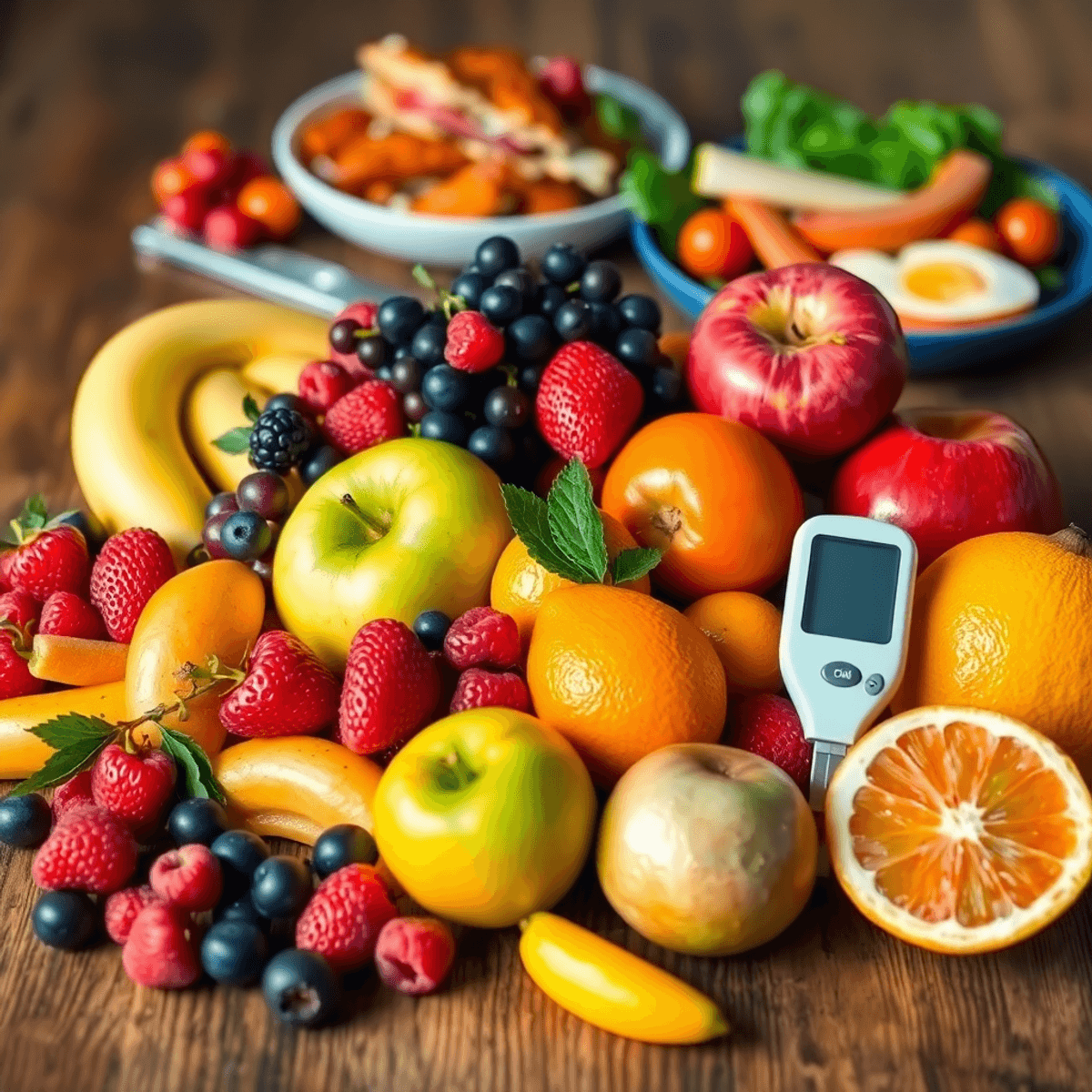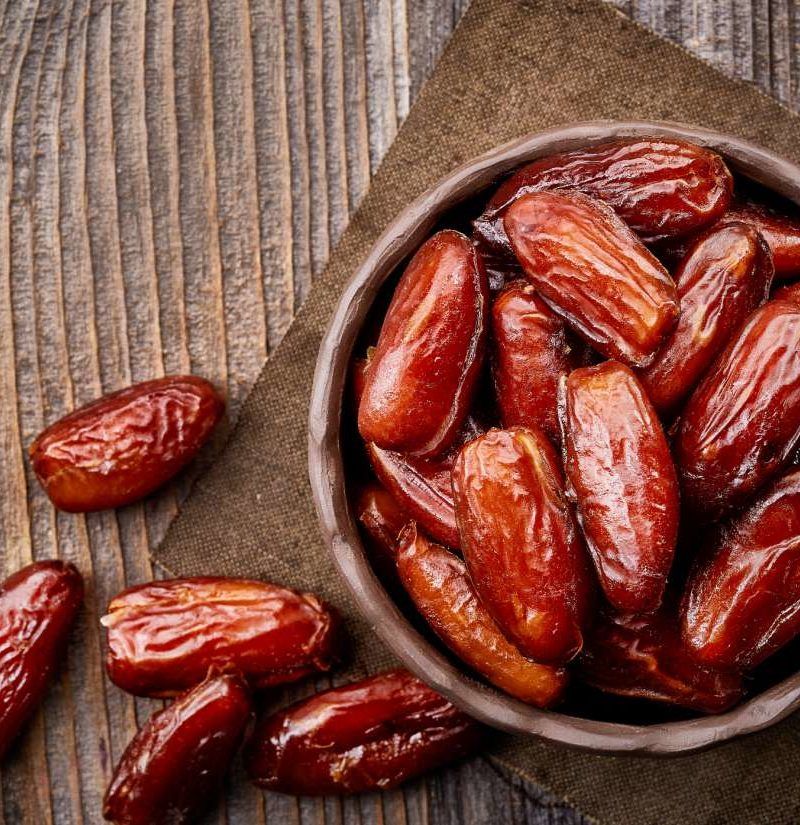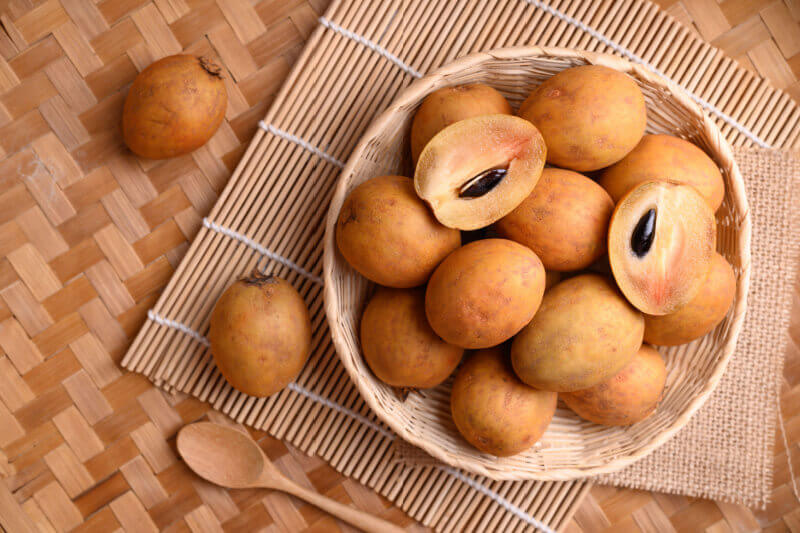What Fruits Should Diabetics Avoid? The Ultimate Guide
Living with diabetes requires careful attention to blood sugar management. Every food choice impacts glucose levels, making dietary decisions crucial for maintaining stable blood sugar. While fruits are often celebrated for their nutritional benefits, their natural sugar content can present challenges for people with diabetes. Choosing low glycemic fruits can be an effective way to enjoy the health benefits of fruit while managing blood sugar levels more effectively.

This guide empowers you to make smart fruit choices for your diabetic diet. We'll explore which fruits to limit, which to embrace, and why these distinctions matter for your blood sugar control. Armed with this knowledge, you can enjoy the sweetness of fruits while maintaining your health goals.
Understanding the Impact of Fruits on Blood Sugar Levels
Natural sugars in fruits interact with your blood glucose levels in unique ways. While fruits contain fructose - a natural sugar - their impact on blood sugar varies significantly based on two key factors: fiber content and portion size.
The Fiber Factor
Fruits rich in fiber slow down sugar absorption into your bloodstream, creating a gradual rise rather than a sudden spike. This fiber acts as a natural buffer, helping maintain stable blood glucose levels. For example, a medium apple contains 4.5g of fiber alongside its natural sugars, making it a smarter choice for blood sugar management.
Portion Control Matters
The amount of fruit you eat directly influences your blood sugar response:
- A small serving (½ cup) of fruit typically contains 15g of carbohydrates
- Larger portions can lead to higher sugar absorption
- Spreading fruit consumption throughout the day helps prevent blood sugar spikes
Additionally, employing some simple strategies to prevent blood sugar spikes after meals can further aid in managing your blood glucose levels effectively.
Blood Sugar Impact Scale
Different fruits affect blood sugar at varying rates:
- Low impact: Berries, apples, pears
- Medium impact: Oranges, peaches
- High impact: Watermelon, ripe bananas
In managing blood sugar levels, it's also worth considering alternatives like erythritol, a sugar-free substitute that has gained popularity due to its benefits and lower impact on blood glucose.
Additionally, incorporating sugar-free products into your diet can help manage sugar intake effectively. These products are designed with careful consideration of ingredients to ensure they are both tasty and beneficial for health.
For instance, Artinci offers a range of sugar-free sweets that are diabetic-friendly and made with high-quality ingredients. Their product philosophy emphasizes scientific research to create products that not only taste good but also cater to specific dietary needs.
Moreover, if you're looking for delightful treats that align with your health goals, consider exploring Artinci's Kaju Katli and Motichoor Ladoo combo, which could be an excellent option for festive gifting while still being mindful of sugar intake.
Fruits Diabetics Should Avoid or Limit
While fruits offer essential nutrients, some varieties can significantly impact blood sugar levels. Here's a detailed list of fruits that require careful consideration:
High Sugar Fruits to Watch:
Here are ~100-word explanations for each high-sugar fruit and why they are not ideal for individuals with diabetes, considering their sugar content and impact on blood glucose:

1. Dates (Dried) – 63g Sugar per 100g
Dates are one of the highest-sugar fruits available, with about 63g of sugar per 100g. Even though they are rich in fiber, iron, and potassium, their dense sugar concentration makes them unsuitable for diabetics. The natural sugars—mainly glucose and fructose—can lead to a sharp rise in blood glucose levels. Just 2–3 dates can deliver the sugar equivalent of an entire meal for a diabetic person. Variants like Medjool or Deglet Noor may differ slightly in size and sweetness but are all high in sugar. Dates should be avoided or eaten in extremely limited quantities.

2. Figs (Dried) – 48g Sugar per 100g
Dried figs are naturally sweet and nutrient-dense, but they pack a punch when it comes to sugar—around 48g per 100g. They contain natural sugars like fructose and glucose, which quickly enter the bloodstream and spike blood sugar levels. While figs do offer some fiber and minerals, dried versions are far more concentrated in sugar than fresh ones. For diabetics, even a small handful can result in hyperglycemia. Variants like Black Mission or Smyrna figs have similar sugar content. If consumed at all, it’s crucial to pair them with a source of protein or fat to slow down absorption.

3. Grapes – 16g Sugar per 100g
Grapes are a convenient and refreshing snack but are deceptively high in natural sugars—about 16g per 100g. Most of this sugar is glucose and fructose, which cause rapid increases in blood glucose. While grapes contain antioxidants like resveratrol, their high glycemic load can pose problems for diabetics. Varieties such as red, green, or black grapes all have similar sugar content, with green grapes sometimes being slightly less sweet. Since grapes are small and easy to overeat, portion control becomes difficult. Diabetics are better off avoiding them or consuming very small amounts with a protein-rich food to offset glucose spikes.

4. Chikoo (Sapota) – 14g Sugar per 100g
Chikoo, or sapota, is a tropical fruit that’s beloved for its caramel-like flavor. However, it's extremely high in sugar—about 14g per 100g—and primarily composed of sucrose, fructose, and glucose. It’s low in fiber and high in carbs, which makes it a poor choice for diabetics. The fruit’s sugar content can vary with ripeness—fully ripe chikoo has even higher sugar levels. Eating even one fruit can lead to a significant blood sugar rise. Its glycemic index is also high, and regular consumption can make managing blood sugar very challenging for diabetic individuals.

5. Mango – 14g Sugar per 100g
Mangoes are often called the "king of fruits" in India, but their high sugar content—roughly 14g per 100g—makes them unsuitable for diabetic diets. The sweetness in mango comes from a mix of fructose, sucrose, and glucose, which are rapidly digested and absorbed. Different varieties like Alphonso, Kesar, or Langda differ slightly in taste but are all high in natural sugars. While mangoes do contain vitamin C and antioxidants, their high glycemic load can cause a rapid rise in blood sugar. Eating them in moderation is key, but many diabetics may be better off avoiding them entirely.

6. Lychee – 15g Sugar per 100g
Lychees are juicy and aromatic, but they contain around 15g of sugar per 100g—most of which is fructose and glucose. These sugars are quickly metabolized and can lead to post-meal spikes in blood glucose levels. Lychees have a relatively high glycemic index and provide minimal fiber, which exacerbates the problem for diabetics. Though they offer some vitamin C and antioxidants, the sugar concentration outweighs the benefits for those trying to control their blood sugar. Canned lychees, which are often packed in syrup, are even worse and should be completely avoided.

7. Banana (Ripe) – 12g Sugar per 100g
Ripe bananas are among the most commonly consumed fruits, yet they contain around 12g of sugar per 100g. As they ripen, starches convert into sugars—mostly glucose and fructose—making them very sweet and rapidly digestible. This can be problematic for diabetics, especially when combined with other carbohydrate-rich foods. Varieties like Robusta, Rasthali, and Dwarf Cavendish all carry similar sugar loads. Though bananas provide potassium and B vitamins, their glycemic response is high. A small unripe banana may be a better option occasionally, but ripe bananas should be eaten in strict moderation, if at all.
:max_bytes(150000):strip_icc()/SES-history-of-the-pineapple-1807645-343418eb3b4c41b1b956d3c702550a07.jpg)
8. Pineapple – 10g Sugar per 100g
Pineapples are tropical fruits rich in vitamin C and bromelain, but they contain about 10g of sugar per 100g. This sugar is primarily glucose and sucrose, both of which are absorbed quickly into the bloodstream. Pineapple has a high glycemic index, making it a poor choice for blood sugar control. The sugar concentration increases in ripe pineapples and in canned or juiced forms. Even small servings can lead to post-meal glucose surges. Diabetics can consume tiny portions with a meal containing protein and fiber, but it's generally best to limit intake significantly.

9. Custard Apple – 20g Sugar per 100g
Custard apple, or sitaphal, is very sweet and creamy, with about 20g of sugar per 100g. The majority of the sugars are glucose and fructose, making it a high glycemic load fruit. It contains some fiber, but not enough to offset its blood sugar impact. This fruit is calorie-dense and offers minimal benefit for diabetics when compared to its high sugar content. Some variants may be slightly less sweet, but in general, even a small portion can cause a significant glucose spike. Custard apples should be avoided or eaten only in extremely small quantities under guidance.

10. Jackfruit – 19g Sugar per 100g
Jackfruit is another traditional Indian favorite, but it’s not diabetic-friendly due to its 19g of sugar per 100g. This sugar is a mix of sucrose and fructose, which elevates blood sugar quickly. Jackfruit is also starchy and contains digestible carbohydrates, adding to its glycemic load. While it offers vitamin A and potassium, its high sugar and carb content outweigh the nutritional benefits for someone with diabetes. Ripe jackfruit is particularly risky, though raw jackfruit used in curries has a much lower sugar content and can be consumed in moderati
These fruits can trigger rapid blood sugar spikes due to their high natural sugar content combined with relatively low fiber levels. The concentration of sugars becomes particularly intense in dried fruits, as the dehydration process removes water while retaining the sugars in a smaller volume.
Why These Fruits Affect Blood Sugar:
- Quick absorption: Their high sugar-to-fiber ratio leads to faster digestion
- Concentrated sugars: Dried fruits pack more sugars in smaller portions
- Lower satiety: Many of these fruits don't provide lasting fullness, leading to potential overconsumption
When choosing snacks, consider pairing small portions of these fruits with protein-rich foods to slow down sugar absorption. A quarter cup of grapes with a handful of almonds creates a more balanced option than eating the fruit alone.
In addition to being mindful about fruit consumption, exploring alternative sweeteners could be beneficial. For instance, you may incorporate natural sweeteners like stevia, monk fruit extract and erythritol.
Lastly, if you're craving sweets, consider trying healthier options like sugar-free Motichoor Ladoo, which are made with pure ghee and no added sugar.
Healthier Fruit Alternatives for Diabetics
Living with diabetes doesn't mean giving up fruits entirely. Many delicious options can satisfy your sweet cravings while maintaining stable blood sugar levels.
Best Low-GI Fruits for Diabetics:
- Berries: Strawberries, blueberries, and raspberries pack powerful antioxidants with just 4-5g of sugar per 100g serving
- Green Apples: Rich in pectin fiber that slows sugar absorption, with a glycemic index of 38
- Citrus Fruits: Oranges and grapefruits offer vitamin C and fiber while containing only 8-9g of sugar per fruit
- Kiwi: Contains 6g of sugar per fruit with high fiber content to prevent blood sugar spikes
- Stone Fruits: Peaches and plums provide natural sweetness with a low glycemic load
- Fresh Melons: Cantaloupe and honeydew offer hydration with moderate sugar content
- Dragon Fruit: This exotic fruit not only has a low glycemic index but also offers numerous health benefits.
These fruits stand out for their:
- High fiber content that slows sugar absorption
- Rich antioxidant profiles supporting overall health
- Lower sugar content compared to tropical fruits
- Beneficial nutrients like vitamins C, K, and potassium
The key to enjoying these fruits lies in portion control. A serving size of 1 cup for berries or melons, or one medium-sized fruit for apples and citrus, helps maintain blood sugar balance while providing essential nutrients.
Raw, whole fruits are preferable to juiced versions, as the intact fiber helps regulate sugar absorption into your bloodstream.
However, if you're looking for some alternative sweet treats that won't spike your blood sugar levels, consider exploring sugar-free products made with natural sweeteners such as gluten-free almond cookies or diabetic-friendly kaju katli. These options can satisfy your sweet tooth without compromising your health. For more insights on which fruits are generally good for diabetics, you might find this resource on fruit choices beneficial for diabetes helpful.
Conclusion
Making smart fruit choices plays a vital role in managing diabetes effectively. While certain fruits need to be limited or avoided, this doesn't mean eliminating fruits from your diet completely. The key lies in selecting low glycemic fruits with lower sugar content, higher fiber, and understanding proper portion sizes.
Your journey to managing diabetes with diet is unique to you. What works for one person might not work for another. A healthcare professional can help create a personalized eating plan that considers your:
- Individual blood sugar responses
- Medication schedule
- Activity level
- Overall health goals
Remember - fruits can be part of a healthy diabetic diet when chosen wisely and consumed in moderation. Armed with knowledge about different fruits' impact on blood sugar, especially low glycemic fruits, you can make confident choices that support your health and well-being.
In addition to making mindful fruit choices, incorporating other low-sugar food options into your diet can also be beneficial. For instance, you might consider trying sugar-free almond flour cake, which is keto, gluten-free, and diabetic-friendly. Similarly, our sugar-free coconut cookies are another great option that is sweetened with a natural, low-glycemic stevia blend, making them perfect for those on a weight loss or diabetic-friendly diet.
Disclaimer: Please note that while these sugar-free alternatives can be helpful for managing blood sugar levels, it's important to monitor your individual response and consult with a healthcare provider for personalized dietary guidance tailored to your specific needs.
FAQs
1.What is the impact of fruit consumption on blood sugar levels for diabetics?
Fruits contain natural sugars and fiber, which can affect blood sugar levels differently. While natural sugars can raise blood glucose, fiber helps slow sugar absorption, promoting stable blood sugar levels. Portion size also plays a crucial role in managing the blood glucose response to fruit consumption.
2.Which fruits should diabetics avoid or limit due to high sugar content?
Diabetics should be cautious with fruits that have high natural sugars and a high glycemic index, such as dried dates and figs, grapes, mangoes, pineapples, ripe bananas, lychee, cherries, watermelon, custard apple, and jackfruit. These fruits can cause rapid blood sugar spikes due to their sugar content and/or low fiber.
3.What are some diabetic-friendly low glycemic fruits with lower sugar content?
Fruits suitable for diabetics include those with lower sugar content and favorable glycemic indexes like berries (strawberries, blueberries), apples, kiwi, oranges, cantaloupe, and honeydew melon. These fruits offer higher fiber and antioxidant content that supports stable blood sugar levels.
4.Why is diet important in managing diabetes, especially regarding fruit consumption?
Diet plays a vital role in diabetes control because it directly influences blood sugar management. Choosing the right fruits helps prevent rapid spikes in blood glucose levels while providing essential nutrients and fiber that support overall health.
5.How does the glycemic index of fruits affect their suitability for diabetics?
The glycemic index (GI) measures how quickly carbohydrates in foods raise blood glucose levels. Fruits with a high GI cause faster increases in blood sugar and are less suitable for diabetics. Low GI fruits release sugars more slowly, helping maintain stable blood glucose levels.

